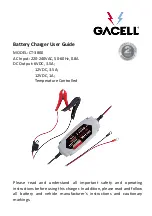
T. POI (Point of Interest) Touch Screen Button. See
“Displaying Points of Interest (POI) on the Map
Screen” under Symbols on page 2-7 for more
information.
U.
1
(Zoom Out) Touch Screen Button. See “Map
Scales” under Maps on page 2-4 for more
information.
V.
y© ¨ z
(Seek) Key (Previous/Next). See
Navigation Audio System on page 3-2 for more
information.
W.
w
(Tune) Knob. See Navigation Audio System
on page 3-2 for more information.
X. NAV (Navigation) Key. See “Hard Keys” under Using
the Navigation System on page 2-2 for more
information.
Y. RPT (Repeat) Key. See “Hard Keys” under Using
the Navigation System on page 2-2 for more
information.
Z. DEST (Destination) Key. See Destination on
page 2-13 for more information.
AA. CONFIG (Configure) Key. See Configure Menu on
page 2-28 for more information.
Getting Started
Before you begin to operate the navigation system, read
this manual thoroughly to become familiar with it and
to understand how the system works.
Any route suggestions made by this navigation system
may never override local traffic regulations, your
own judgement, and/or knowledge of safe driving
practices.
Disregard route suggestions made by the navigation
system if such suggestions would; cause you to perform
a hazardous or illegal maneuver, place you in a
hazardous situation, or route you into an area you
consider unsafe.
Keeping your mind on the drive is important for safe
driving. See “Defensive Driving” in the Index of
your vehicle’s owner manual for more information. Get
familiar with your vehicle’s navigation system so
you can use it with less effort and take full advantage of
its features. Your navigation system includes not only
navigation, but also audio functions. While your
vehicle is parked:
•
Familiarize yourself with all of its controls: hard
keys on the faceplate and touch-sensitive screen
buttons.
•
Familiarize yourself with its operation.
1-4







































